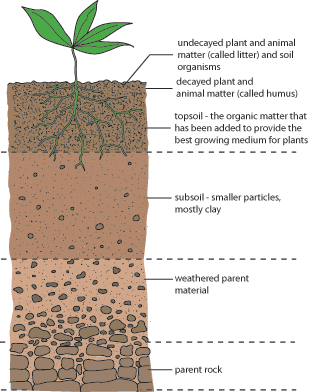

Free State Prairie
Lawrence Free State High School
Prairie soil
The parent material of prairie soils in northeast Kansas came from many sources. Limestone, shale, and sandstone formed millions of years ago from sediments left by a large inland sea. Other geologic material was deposited as glaciers scoured and then retreated from the Central Plains thousands of years ago. Silt and clay sediments composed of quartz, feldspar, mica, and other minerals were deposited by glaciers and flowing water as they melted. Over time, some of these deposits became wind born and were deposited as "loess," an important prairie soil component especially along the Missouri River and Mississippi River Valleys.
Small particles of deposited sediment were subject to high winds on a flat landscape, however, the prairie soil became secured by the deep root systems of plants that could survive drought by seeking deep ground water resources.

